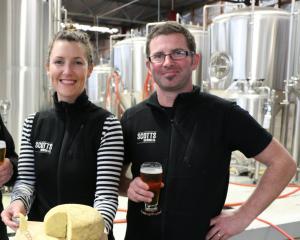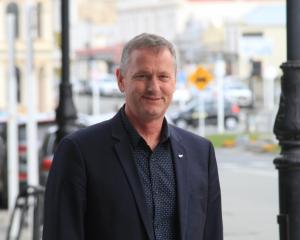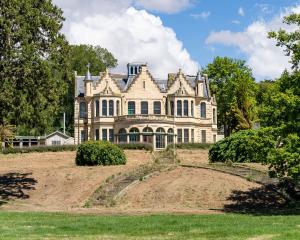They will be considerably older and there will be a few gaps in the ranks, but next Wednesday seven men will meet in Oamaru to mark the 50th anniversary of an expedition to the remote subantarctic Heard Island. Neal Wallace relives the expedition through one of those explorers, Philip Temple.
It was arguably one of the world's last great expeditions.
The venture to Heard Island, a remote, windswept, weather-battered subantarctic island in the southern Indian Ocean, might not have had the glamour or profile of finding the source of the Amazon or trekking the Antarctic, but its isolation and extreme weather in an age without GPS, satellite radio or the thermal properties of modern clothing made it an extremely dangerous one.
It was 1964 and noted climbers Englishman Warwick Deacock and Australian Grahame Budd were putting together a team to climb the unconquered largest peak on Heard Island, Big Ben, also an active volcano. Being in Australian territory, at 2700m it was also the continent's highest peak.
For Dr Budd, it was unfinished business.
An earlier failed assault on the peak had almost cost him his life when a sudden weather change nearly buried him under snow.
A member of the 1964 expedition, Dunedin climber and author Philip Temple, said the peak was not technically difficult to climb but the extreme speed with which weather could change provided the biggest challenge.
And that was assuming they had survived the 4000km sailing trip from Western Australia.
With the embryo of a plan, Mr Deacock and Dr Budd realised they would have to fund the £20,000 trip themselves, so in addition to finding the right personnel, they also had to find the money.
Mr Temple said they achieved both but it would be the mix of the nine other explorers finally selected by Mr Deacock that would prove the key reason for the success of the expedition.
This was vital, given the inhospitable nature of the journey and the island.
The weather was influenced by the island's relative closeness to the Antarctic and its situation in the middle of a vast ocean and on the same latitude as the convergence of the polar and sub-tropic waters.
Mr Temple said the constant wind was one of his most vivid memories of his visit but, also, the extreme changes in the weather meant rain rapidly froze, making life very difficult and dangerous.
Each member contributed to the trip and sponsors provided fuel and food.
Aspiring media tycoon Rupert Murdoch, who was launching The Australian newspaper at the time, saw it as a way of drumming up interest in his new venture and paid £3000 for news rights.
Film rights were also sold for £4000.
They chartered a 19m steel-hulled schooner, Patanela, which had worked as a crayfishing boat in Tasmania, and it went to Sydney to be strengthened and modified.
Those recruited for the expedition were a mix of mountaineers and sailors who had impressive pedigrees.
Mr Temple was confident in the mountains, but could not swim.
Despite that hanging over him, he said the excitement of the expedition and rubbing shoulders with some of the world's most respected climbers pushed those fears to one side.
The plan was for five men to land on the island and spend a month climbing Big Ben, charting the island and exploring and gathering scientific data and information, while the other five would sail to the nearby French-controlled subantarctic archipelago Kerguelen, 500km to the northwest.
There they would wait before returning to collect the explorers.
Mr Temple recalls few - if any - tense moments or angry words, such was the collegiality of the team and the care Mr Deacock had taken to select the right mix of people.
Everyone took turns on watch and Mr Temple, who had no sailing experience, had a crash lesson from skipper Bill Tilman.
''He said 'keep the ship pointed in the direction of the compass and if you want to turn the ship to the left, turn the wheel to the left, if you want to turn the ship to the right, turn the wheel to the right'. The lesson was you are going to find out.''
The wheel was not enclosed and while on duty Mr Temple recalls breaking one rule - to never look behind.
On the occasion he did, the size and noise of the approaching wave was so loud and the weight of water it delivered so great, it pushed the vessel down into the ocean, forcing the rest of the crew to come up on deck to check if Mr Temple was still alive.
By looking, he had taken evasive action.
Communication was also difficult.
The aerial for the radio had to be strung between masts but the distance was not sufficient to provide a strong signal, creating difficulties.
They sailed from Sydney to Albany, then to Kerguelen Island, and then Heard Island, a voyage that took five weeks, sailing when they could to conserve fuel.
There is no mooring at Heard Island so the plan was to make three trips of equipment in a 6m rubber boat through the breakers, an ominous prospect for a non-swimmer.
''I remember being sick to my stomach at the prospect of doing this, partly because I was a non-swimmer.''
They capsized during the first run and managed only two trips.
For the next month they lived in tents among the abundant wildlife but with ice covering two-thirds of the land, and the stunted vegetation, there was little protection from the wind.
The climb on Big Ben was relatively straightforward.
One member fell into a crevasse twice, but the party was roped together.
For the rest of the time they carried out experiments and Mr Temple's entomology work was revealing.
''The wind never stopped to the extent there were no flying insects.''
Mr Temple described the island as spectacular and noted the numbers of seals and sea lions had recovered from the hunting days.
But it was the difficulties of day-to-day living, the rain, cold and wind that were their greatest challenge.
''Actually the basic conditions didn't worry us. It was the climate that drove me mad, the wind ...''
They were to benefit from heavy waterproof coats, designed by Colin Putt, which allowed them to handle the changeable weather.
They often had to break ice off their tents.
There were signs of the limited human habitation everywhere: small shelters, shipwrecks and the ironmongery used by the whalers.
The day before they were due to leave, Patanela duly arrived, but they still had to get aboard.
Colin Putt had spent a long time studying the tides to work out the safest way to get back through the surf, but in the end it was decided it was too risky to make multiple trips.
They could not get all their gear off the island, so their scientific collections, cameras and valuable personal equipment were strapped into the rafts and the rest left ashore.
''We waited, then ran into the surf and we got across even though the outboard motor was only firing on one cylinder. We crawled out to the ship.
''The feeling of relief among everybody was enormous.''
Mr Temple says the era up to the late 1960s was the last period when a group of people could venture into a ''genuinely unknown world'' without the maps, global positioning systems, high-powered radios or meteorological information available today.
''There were blanks in the maps in those days.''
If they had got into trouble, help was not guaranteed and at best was many days away.
''You had to be highly organised, completely self-sufficient while also taking a risk.''
Once back in Sydney, the party went their separate ways within a few days.
Mr Temple ended up back in Christchurch, where he wrote a book on the adventure, The Sea and the Snow.
Most continued climbing and some kept in touch from time to time, but next week's reunion will be the first time they have all been together again.
Heard Island
• Part of the Heard Island and McDonald Island group.
• Heard Island is about 4000km southwest of Western Australia, 4700km southeast of Africa and 1000km north of the Antarctic.
• Lies in the ''furious 50s'', so named by sailors in the 18th century for the strong winds at that latitude.
• Island is 368sq km, 40km long and 20km wide.
• 70% of the island is covered in glaciers.
• Vegetation is predominantly stunted short shrubs.
• Average summer temperature range: 3.7degC to 5.2degC.
• Average winter temperature range: -0.8degC to 0.3degC.
• Average annual precipitation: 1.3m to 1.9m.
• Precipitation is recorded on four out of five days.
• Average monthly wind speed: 26kmh to 33.5km, with gusts up to 180kmh.
• Home to penguins, petrels, elephant seals and fur seals.
• First landing of humans was in 1855.
• The killing and rendering of elephant seals began in 1854-55.
• Oil production peaked in 1857-58 before numbers declined and it ended in 1877.
• More than 40 vessels, almost all from the northeastern United States of America, made more than 100 voyages to the island.
• Poor weather and a lack of sheltered harbours along its coast meant many vessels ran aground.
• Visits since have predominantly been by scientists.
- Source: Department of the Environment, Australian Antarctic Division
The expedition
• Warwick Deacock (leader): former major in the British Royal Marines. Established Australia's first Outward Bound school in New South Wales. Noted climber who had climbed throughout the Himalayas.
• Grahame Budd (scientific officer): an Australian who had worked and climbed in many isolated parts of the world.
• John Crick (quartermaster): least experienced member of the party. Identified by Deacock while attending his Outward Bound school.
• Malcolm Hay (cinematographer): Australian-based.
• Antony Hill (ship's mate): a late replacement. He had climbing experience.
• Russel Pardoe (medical officer): a trained surgeon who also served with the Australian Army as a commando. He travelled to extreme parts of the globe and saved the life of an engineer who had suffered a cerebral haemorrhage in the Antarctic by performing neurosurgery while communicating with a neurosurgeon by morse code.
• Colin Putt (engineer): a New Zealander who had moved to Australia. An exceptional engineer who was also a climber, having spent time climbing in Papua New Guinea.
• Ed Reid (radio operator): a former Australian naval officer who became a sailing instructor and radio operator.
• Philip Temple (entomologist and writer): extensive climbing experience in New Zealand and Papua New Guinea. Collected insect samples for the Bishop Museum in Hawaii and wrote a book on the expedition.
• H.W.''Bill'' Tilman (skipper): an ex-British serviceman who had fought in both world wars. He was known as a tough man, despite being aged 66 at the time of the expedition. The first person to climb Mt Kenya, he also climbed extensively in the Himalayas and was the first European to approach Mt Everest from the Nepalese side. He then started sailing and sailed in some of the roughest water in the world.
The island party was Deacock, Budd, Putt, Crick and Temple and the other five took Patanela back to Kerguelen for a month.













